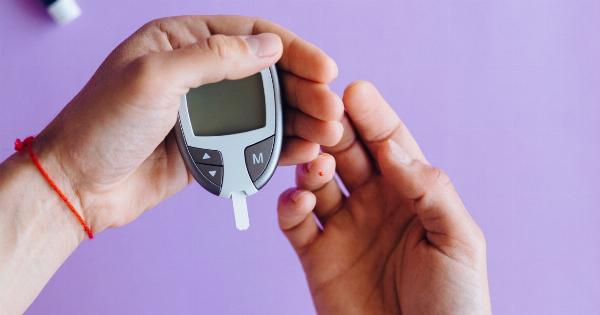Diabetes mellitus is a chronic metabolic disorder characterized by increased blood glucose levels (hyperglycemia) resulting from insulin deficiency or insulin resistance.
It affects millions of people worldwide and is associated with numerous complications, including cardiovascular disease (CVD). Early detection of diabetes plays a vital role in reducing the risk of cardiovascular events and improving patient outcomes.
The Link between Diabetes and Cardiovascular Disease
Diabetes and cardiovascular disease are closely intertwined, with diabetes being a significant risk factor for CVD development.
Individuals with diabetes are more likely to develop heart disease, stroke, and peripheral vascular disease compared to those without diabetes. Moreover, CVD is the leading cause of death in people with diabetes.
Methods of Early Detection
Early detection of diabetes is crucial for timely intervention and the prevention of its complications. Various methods can be utilized for early diagnosis:.
1. Routine Blood Glucose Testing
One of the primary methods for early detection of diabetes is routine blood glucose testing.
By measuring fasting plasma glucose (FPG) levels, oral glucose tolerance tests (OGTT), or HbA1c levels, healthcare professionals can identify individuals at high risk of diabetes or those with undiagnosed diabetes.
2. Identification of Risk Factors
Identifying risk factors associated with diabetes can facilitate early detection. These risks include obesity, sedentary lifestyle, family history, hypertension, and certain ethnicities.
By evaluating these factors during routine check-ups, clinicians can initiate appropriate diagnostic tests and interventions.
3. Point-of-Care A1C Testing
Point-of-care A1C testing is a rapid and convenient method for diabetes screening. This test measures the average blood glucose levels over the past three months and is useful in identifying individuals with undiagnosed diabetes or prediabetes.
It can be easily performed in primary care settings, pharmacies, or community centers.
4. Continuous Glucose Monitoring
Continuous glucose monitoring involves the use of a sensor inserted under the skin to measure glucose levels throughout the day. This method provides real-time data, aiding in the early detection of both high and low blood sugar levels.
Continuous glucose monitoring is especially beneficial for individuals at high risk of diabetes or those with prediabetes.
Implications of Early Detection
The early detection of diabetes allows for timely intervention and implementation of preventive measures, thereby reducing the overall cardiovascular risk. Some key implications of early detection include:.
1. Lifestyle Modifications
Early detection provides an opportunity for individuals to make necessary lifestyle modifications. These changes can include adopting a healthy diet, engaging in regular physical activity, and managing weight.
Lifestyle modifications play a crucial role in diabetes management and can significantly reduce the risk of cardiovascular complications.
2. Glycemic Control
Early detection enables clinicians to initiate appropriate treatment strategies to achieve glycemic control.
Whether through the use of oral medications or insulin therapy, maintaining optimal blood glucose levels reduces the risk of cardiovascular events and other diabetes-related complications.
3. Blood Pressure Management
Individuals with diabetes are prone to hypertension, which further increases the risk of CVD. Early detection allows healthcare providers to closely monitor blood pressure and institute measures to keep it within a healthy range.
This includes lifestyle modifications, diet management, and pharmacological interventions if necessary.
4. Lipid Profile Optimization
Achieving optimal lipid profiles is crucial in reducing cardiovascular risk. Early detection of diabetes enables healthcare professionals to initiate appropriate interventions, such as lipid-lowering medications, to maintain healthy cholesterol levels.
This, in turn, reduces the risk of atherosclerosis and cardiovascular events.
Conclusion
Early detection of diabetes is paramount in reducing cardiovascular risk and preventing complications. Healthcare providers should emphasize the importance of routine screening, identification of risk factors, and prompt intervention.
Through lifestyle modifications, glycemic control, blood pressure management, and lipid profile optimization, the burden of cardiovascular disease in individuals with diabetes can be significantly reduced.
























